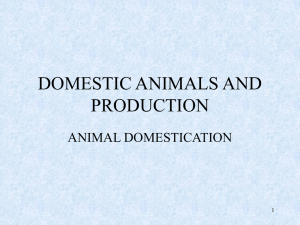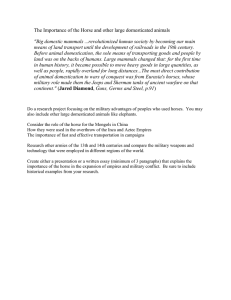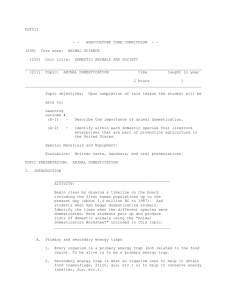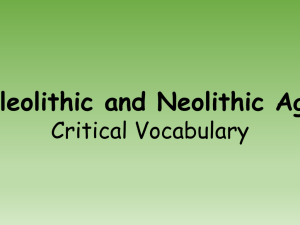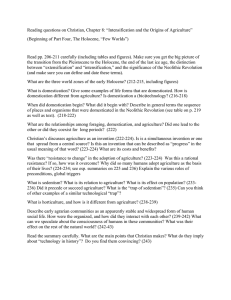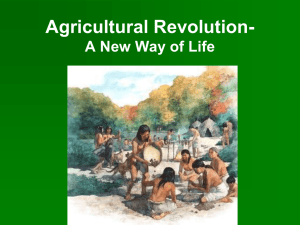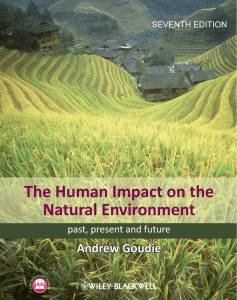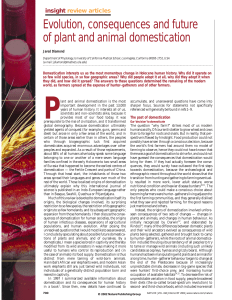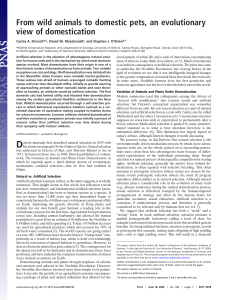Note Taking Guide Topic # 3016 Animal Domestication
advertisement
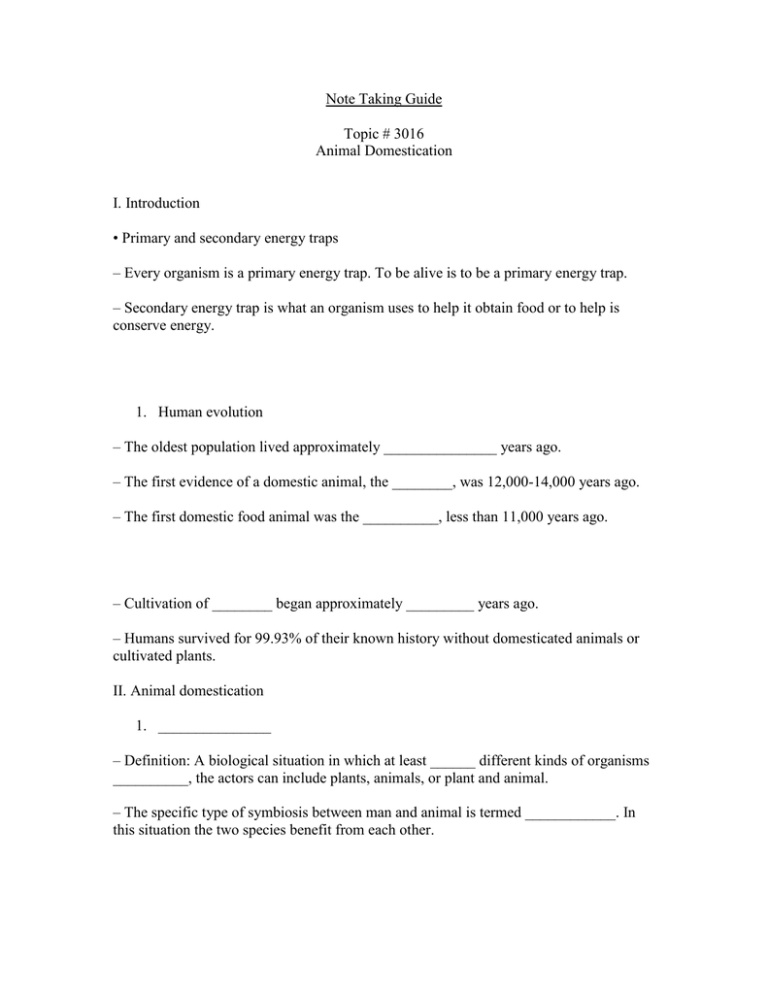
Note Taking Guide Topic # 3016 Animal Domestication I. Introduction • Primary and secondary energy traps – Every organism is a primary energy trap. To be alive is to be a primary energy trap. – Secondary energy trap is what an organism uses to help it obtain food or to help is conserve energy. 1. Human evolution – The oldest population lived approximately _______________ years ago. – The first evidence of a domestic animal, the ________, was 12,000-14,000 years ago. – The first domestic food animal was the __________, less than 11,000 years ago. – Cultivation of ________ began approximately _________ years ago. – Humans survived for 99.93% of their known history without domesticated animals or cultivated plants. II. Animal domestication 1. _______________ – Definition: A biological situation in which at least ______ different kinds of organisms __________, the actors can include plants, animals, or plant and animal. – The specific type of symbiosis between man and animal is termed ____________. In this situation the two species benefit from each other. – Domestication of animals is an example of a symbiotic relationship. Man provides food and shelter to the animals, and they provide meat, mild, and fiber for man. – Because of this relationship, both humans and domestic animals are secondary energy traps for the other; humans provide feed and care for the animals, while the animals provide draft power, meat, skins, milk. fiber, etc.. 1. What is a ___________ animal – Definition: includes those animals whose breeding is or can be controlled by __________. 1. Excluding: zoo and circus animals, various rodents and primates, research animals, and animals caught wild and tamed. 1. Does include reindeer. – Taming is on the path to domestication, but a tamed animal is not a domestic animal. – Animals caught in the wild and tamed are not considered domesticated. Once they are bred in captivity and selected for particular qualities then they can be considered domesticated. – A domestic animal can not truly revert to being a wild animal. – Domestic animals that return to _________ and breed are termed feral. 1. When, where, why domesticate. – Hunters and gathers began domesticating animals through taming, but without any purposes other than for things they already knew: meat, skins, and bones. – Through long experience and a decrease in the need for a nomadic lifestyle, many secondary uses of the animals were realized: milk, wool, power, etc.. – A cultural revolution resulted as people were transformed from hunters and gathers to herders and cultivators. This is what started the modern civilization. – The end of the __________ period marked the beginning of domestication. The glaciers began retreating 14,000 years ago. The full retreat was 11,000 years ago. – People began harvesting wild grasses that were growing abundantly and storing them. At this point in history, people could not leave for long periods of time for fear someone could come along and loot their food sources. This is what led to small villages being formed. This gradually changed the culture to what it is today. 1. Women no longer had to spend as much time gathering food. This increased birth rate and decreased infant mortality. 1. Men now had to always hunt near the villages, which resulted on over hunting in some areas. 1. More animals had to be domesticated for personal food supply. 1. Slowly, the human became more of a ________ and less of a __________. 1. Domestication of modern species. – The ______ was first about 12,000 to 14,000 years ago in northern Iraq – Livestock 1. Iraq: sheep about 11,000 years ago 1. Asia minor: swine and sheep about 9,000 years ago. 1. Greece: cattle, swine, sheep, and goats about 7,000 years ago. 1. Central Asia: horses and asses about 7,000 years ago. 1. Pakistan: poultry about 5,000 years ago. 1. Egypt: ______ about 3,500 years ago to keep rodents out of grain stores. – Importantance of animal domestication. 1. Protection 1. Steady source of protein 1. Power 1. Milk 1. Transportation 1. Shelter 1. Fiber 1. higher standard of living 1. More time to create art and develop religion and government 1. Recreation
